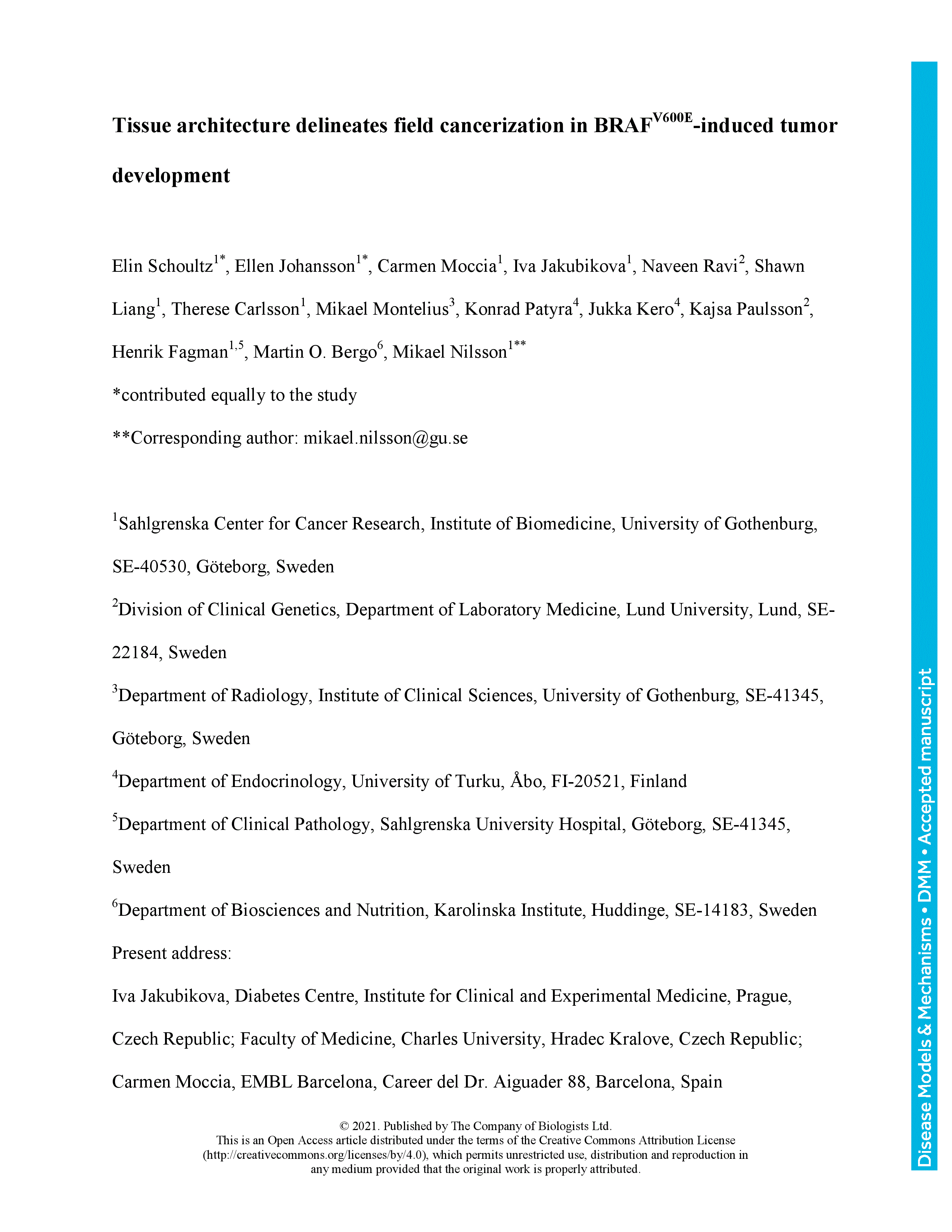Cancer cells hijack developmental growth mechanisms but whether tissue morphogenesis and architecture modify tumorigenesis is unknown. Here, we characterized a new mouse model of sporadic thyroid carcinogenesis based on inducible expression of BRAFV600E from the thyroglobulin promoter (TgCreERT2). Spontaneous activation of this Braf-mutant allele due to leaky CRE activity revealed that intrinsic properties of thyroid follicles determined BRAF-mutant cell fate. Papillary thyroid carcinomas developed multicentrically within a normal microenvironment. Each tumor originated from a single follicle that provided a confined space for growth of a distinct tumor type. Lineage tracing revealed oligoclonal tumor development in infancy and early selection of BRAFV600E kinase inhibitor-resistant clones. Somatic mutations were few, non-recurrent, and limited to advanced tumors. Female mice developed larger tumors than males, reproducing the gender difference of human thyroid cancer. These data indicate that BRAFV600E-induced tumorigenesis is spatiotemporally regulated depending on the maturity and heterogeneity of follicles. Moreover, thyroid tissue organization seems to determine whether a BRAF-mutant lineage becomes a cancerized lineage. The sporadic thyroid cancer model provides a new tool to evaluate drug therapy at different stages of tumor evolution.
Tissue architecture delineates field cancerization in BRAFV600E-induced tumor development
Present address: EMBL Barcelona, Career del Dr. Aiguader 88, Barcelona, Spain.
Present address: Diabetes Centre, Institute for Clinical and Experimental Medicine, Prague, Czech Republic.
Present address: Faculty of Medicine, Charles University, Hradec Kralove, Czech Republic.
These authors contributed equally to this work
Currently Viewing Accepted Manuscript - Newer Version Available
Elin Schoultz, Ellen Johansson, Carmen Moccia, Iva Jakubikova, Naveen Ravi, Shawn Liang, Therese Carlsson, Mikael Montelius, Konrad Patyra, Jukka Kero, Kajsa Paulsson, Henrik Fagman, Martin O. Bergo, Mikael Nilsson; Tissue architecture delineates field cancerization in BRAFV600E-induced tumor development. Dis Model Mech 2021; dmm.048887. doi: https://doi.org/10.1242/dmm.048887
Download citation file:
Advertisement
Sex matters in preclinical research

DMM calls for improved inclusion, analysis and reporting of sex as a biological variable in preclinical animal modelling research. Read the full Editorial by Monica J. Justice.
Subject collection: Building advocacy into research

DMM’s new series - Building advocacy into research - features interviews, ‘The Patient’s Voice’, with patients and advocates for a range of disease types, with the aim of supporting the highest quality research for the benefit of all patients affected by disease.
Travelling Fellowships for early-career researchers

DMM and its sister journals offer Travelling Fellowships of up to £3,000 to graduate students and post-doctoral researchers wishing to make collaborative visits to other laboratories. Find out more about our Travelling Fellowships and read stories from previous grant recipients.
Read & Publish Open Access publishing: what authors say

We have had great feedback from authors who have benefitted from our Read & Publish agreement with their institution and have been able to publish Open Access with us without paying an APC. Read what they had to say.
The Forest of Biologists
Our Publisher Claire Moulton recently visited the two Woodland Trust UK sites where we are planting new native trees for published Research and Review papers and protecting ancient woodland on behalf of our peer reviewers.
Other journals from
The Company of Biologists



